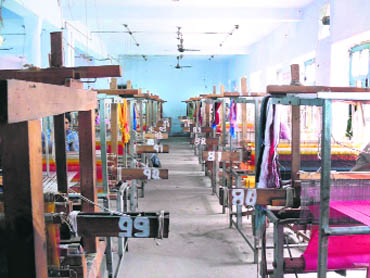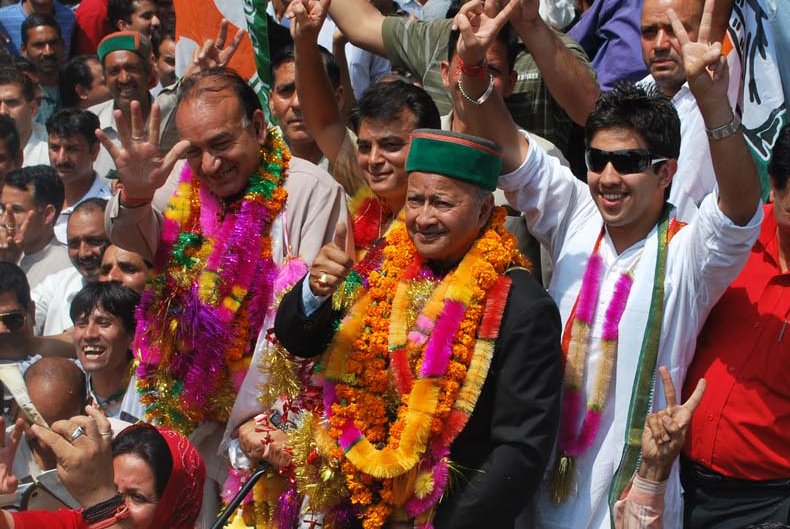Kulu shawls, once the pride of Himachal, face a major threat from powerloom weavers of Ludhiana. The industry needs a strong influx of revenue. Privatisation and increased market accessibility are areas that should be targeted. Reviving the ailing industry would also give a boost to the state economy.
THE tradition of making the famous Kulu shawls is dying. My Himachal, an NGO, has offered a marketing mechanism to the state government to revive this unique handicraft industry. It is now up to the government to take the necessary steps.

Before formulating the mechanism, the NGO, with students of the SP Jain Institute of Management and Research, Mumbai, had done two surveys recently. The need of the hour, according to the surveys, was effective marketing planning to save the industry from extinction. Reviving the ailing industry would also give a boost to the state economy.
The general feeling that one can get a better variety of the shawls elsewhere in Himachal has contributed to the gradual loss of interest in the art. The shawl has a huge cultural linkage to the Kulu valley. Lack of initiatives to publicise this industry has not only dampened the spirits of the shawl weavers of Kulu but has also adversely affected the buyers’ interest to a great extent.
The authentic Kulu shawl retains more warmth. The dyes used are organic, eco-friendly and non-toxic. The original shawl is longer lasting because the fibre is subjected to lesser stress than machine shawls. The buyers get tempted to buy cheap and fake Kulu shawls because they have not seen the authentic ones. The fake Kulu handwoven shawls are sourced mainly from Ludhiana. Some are handwoven but not made in the Kulu region.
The major threat to Kulu weavers is mainly from powerloom weavers of Ludhiana, whose low cost of raw materials allows them to sell shawls at reduced prices. These shawls are elaborately designed with finer fabric and offered in a wide variety of colours. Therefore, they look more attractive to the consumer.
But a discerning customer feels cheated when he realises that the shawl is neither handwoven nor authentic Kulu shawl. For him, the difference between an authentic Kulu shawl and a machine-made one is subtle. A distinguishing test for such critical value-driven consumers is to check if the design appears the same on both sides of the shawl. If it does, then that is an indication that the shawl is handcrafted.
The shawls stamped with trademarks of the original Kulu weavers indicate the authenticity of the material. These steps have been taken up by the government and weavers’ cooperative societies in Kulu to prevent imitation.

Woolmark certification establishes the quality of raw materials used. Hence, though the raw material is sourced from the same location, the presence of the woolmark label on the shawls of some of the influential businessmen attracts a large number of quality-conscious consumers to these branded shawls. However, the exorbitant fee required to acquire this certification has kept others away from applying for it.
The Government of India has introduced the handloom mark, which is a certification that the product is handcrafted and not machine made. While some weavers incorporate this mark to establish their credibility, there is a major reluctance in getting the mark stamped as a cross-section of the weavers and consumers do not know the importance of this mark. Also, this mark doesn’t help in distinguishing if the shawls are made in the Kulu valley or elsewhere.
Hence, in order to combat competition from shawls that are sourced from outside and labelled as Kulu shawls, the district has acquired a geographical indicator (GI). The GI mark signifies that the product has been handcrafted in Kulu district. The Kulu shawl industry can be revived if consumers and manufacturers are made aware of these authentication marks.
The government should put pressure on the bodies concerned such as the Kulu Shawl Weavers Association (KSWA) and the Science and Technology Department to ensure implementation of the GI. The GI would go a long way in reviving this unique art of Himachal.
Says Avnish Katoch, president of My Himachal: “Kulu weavers are leaving this industry now, thanks to the lack of monetary benefits and the sheer taxing nature of the job. The industry needs a strong influx of revenue, which in turn will lead to more wages for the weavers. It is with this overall objective in mind, that privatisation and increased market accessibility are areas that are being targeted by us in our proposed mechanism. Moreover, an effective online sales channel through which Kulu handloom products can be showcased on the websites of private players will go a long way in exposing this industry to markets across the globe. This will allow sellers to cater to the demands in countries of Europe and America.”
Cooperative societies which are involved in the making of authentic handwoven Kulu shawls should be registered to showcase their products on the website. The benefits of such a plan are immense. On the suppliers’ side, it opens up untapped markets and multiple marketing channels to the cooperatives. It creates a sustained demand and gives them access to latest consumer trends. Also, it brings in much- needed work ethics and, most importantly, boosts the economy of the state.
On the buyers’ side, it gives them the “first mover advantage” (access to authentic handwoven products that have the finest quality and finish), and also leads to increased revenues at minimal costs, since the set-up is already there. It greatly enhances their existing brand image, says Katoch.
The major stakeholders in this industry need to get involved. The state government must encourage this plan and support it in every possible way. In association with the Tourism Department, a mechanism should be set up to invite private parties into this market. Substantial benefits should be provided to them. Regular promotional campaigns should be conducted, highlighting the initiatives taken to sustain this industry. Cooperatives must be encouraged to get out of their bureaucratic mould and develop a more aggressive nature towards business, adds Katoch.
Also appeared on Sunday Tribune.




Hi Jagmeet,
Can you please throw some light on this statistics? Which census are you talking about? Is this an official statistics?
According to the 1995 census, Kullu district had 28,500 weavers. 12 years hence, officials can only approximate the number to around 11,000.
Thanks and Best Regards,
Ashima
i hope the Himachal Goverment is taking strong action to save this industry.
Regds/Udai